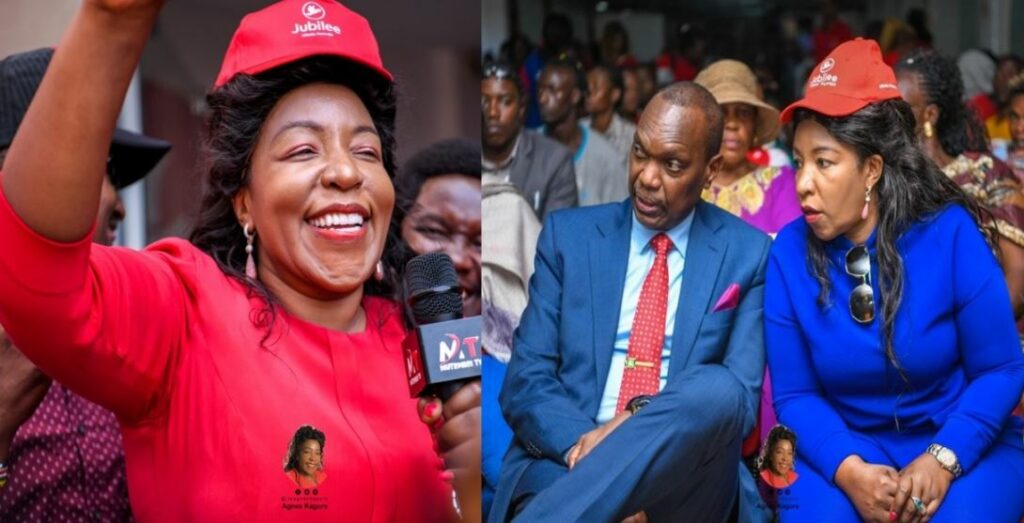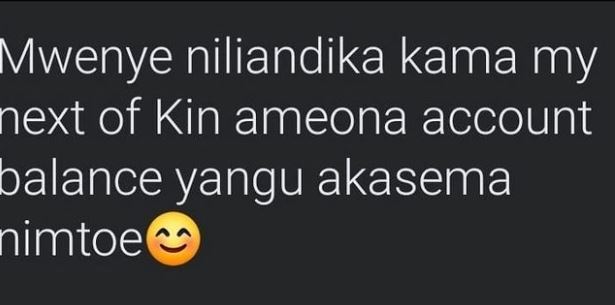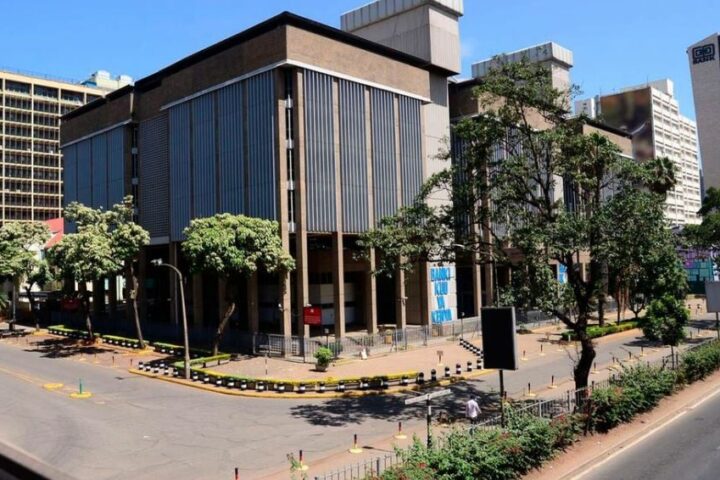 Samsung East Africa head of mobile experience Charles Kimari spoke to the Nation about the firm’s new high-end smartphone models, its mobile phone trade-in initiative, and more.
Samsung East Africa head of mobile experience Charles Kimari spoke to the Nation about the firm’s new high-end smartphone models, its mobile phone trade-in initiative, and more.
Recently, you launched the Samsung S22 series of smartphones just a year after the S21 series hit the market. How was the S21 experience and what is Samsung trying to achieve with the S22 that it missed last year?
Of all the years in this field, that’s the question I love the most. I can tell you as today is the official end of the pre-order and the total number of units done on pre-order even before delivery has been executed have already gone beyond 5,000. The beauty of it is that we started doing early deliveries a week ago. They’re still placing orders but we have had to do a forced closure for the pre-order meaning the appetite and uptake is still very high on the S22. Mind you, it is the first time we are bringing the S series with a Note 20 experience. Before the S series was just the device. The additional value to it is the S-pen. Sometimes back somebody asked whether the Note series was gone. But before we could say it is gone we can say now it is back and in an S experience. So this is fantastic news to our consumers. And we are seeing an uptake of the device from a lot of the Note 20 customers. Our usual S series customer die-hards have ramped up for that. So this time we almost did 50 percent more than what we did last year.
So what can it do that S21 struggled to achieve?
It is more to do with improvement of the device, enhancement of utility and experiences of the product. One key thing that the S22 is really getting good traction is its ability to transform nighttime into day and this enables you to have an all-round approach towards how much you want to experience the device. And this is primarily caught up especially if you need to capture that moment, that story, that’s the time to do it. You don’t have to get lights, you normally have laser flooding, to try and create a bit of lighting for you to take photos. The S22 captures this seamlessly. You have a pro-grade camera that enables you to go for professional shooting on the same. So this is one of the main experiences that we have seen. We have even coined a word for it –nightography – it allows you to take clear photos during the night. On an outside feeling the same you will see the colour vividness. The colours are very well separated. The clarity, on the same, the pixel level is heavily improved on the device. So, for anybody who wants to do excursions, mountain climbing, day and night whatever you want to do with your camera, this is it. Do you want to zoom in or zoom out from long distances? This is the device to do it. The other part that we have actually improved on this device is the addition of the S pen okay.
The S-pen is a game-changer in the whole of this operation because of the nostalgic feeling that the Note users had for their device. The convenience, animating text, those who just draw their thoughts on it very easily. You get creative with your art. So the Note experience on an S series device is not just your everyday usual experience on a device. It is a whole game-changer in that it allows you to write notes from an office perspective. The moment you finish you can convert them to PDF or word documents and it converts from freehand to typed words. You can even convert PDF to Word and vice versa.
Is it only about the camera and the S-pen? I’m now interested in the features of physical security, its durability and now that the Internet of Things is here, cybersecurity.
Correct! And I can tell you this is a good question because Samsung uses Knox as a security feature for this for all our devices. Knox is not just a software; it is actually embedded in the memory of the device, in the chipset. That is why it is very difficult to actually override Knox unlike other software that are on the open source that you can run through it. We have had a couple of scares here and there on the trials from the open market on the same but recovery and ability to actually be able to manage the situation is very easy.
So if my S22 is stolen, how would I recover it?
I like that. Samsung has a portal where you link it to your Gmail account or whichever email. You can track your device and where its location is. You can be able to control that device if you had actually left it online or the moment that device comes online you can track it. So where we are going with this is that there are two aspects. One, we cannot stop the Samsung phones from being stolen but we can stop someone from misusing and manipulating your data.
The most important security aspect for any user is their data. The cost of the data loss is unbelievable. So, when we talk of two aspects I mean in terms of breaching the device, it requires your security settings to have been breached. Either you gave them out or it went through a high level of sophistication of opening the device, which is a very rare activity that takes place. That’s why when you forget all your passwords and you forget everything else then somebody has to actually reset the whole device as opposed to the breach. So it depends very strongly on how the interpretation is done on the same. When you have lost the device and you need to track your device, once you buy the device it’s always advisable to register it on Samsung Plus or create a Samsung account and link it to your Gmail. It becomes very easy. I have tracked my lost Samsung phones twice.
The other question is on the product trade-in initiative. How is it working? Why did you come up with this idea? What do you think about the future of device ownership?
I’m proud to say that we were the first company to do trade-ins. And we started it last year when we did it on the S21. There’s one thing we realised that there is this thirst for consumers to actually change their old devices and they are not shy to pay a nominal fee or an additional difference fee to top up on their product. It was experimental but amazingly phenomenal. The uptake was really good, everything else was perfect. We did it in a span of three weeks, we got a trade-in of around 1,400 devices.
So we are now looking at how we can have it on a sustainable basis. We have identified a company that can support us to transcend to enable a seamless transition of these devices to our customer’s. Customer experience is very important and understanding of the process. So Badili is the company that we are dealing with at the moment and what they do is that you walk into the store with the device that you want to trade-in, they will come in and they will assess the value of your device in terms of damages, in terms of software and in terms of wear and tear. It’s something that is done at the retail level.
Let’s say you bought your S21 Ultra last year at Sh150,000 and you want an S22 Ultra. Now you will go and get the product valued in any of the stores that we have around. They will tell you your device, after usage, has come to maybe around Sh100,000. The S22 Ultra current price is Sh170,000, so you need to top Sh70,000. But Samsung has said that, in addition to that, we will pay for you Sh10,000 of that. So you will only add Sh60,000 to get the new device.
To the average Kenyan these devices are relatively expensive. Do you consider advising customers to insure their phones?
There are different levels of looking at it. Samsung is one of the very few brands, if any, that’s offering something we call Samsung Care Plus, which entitles you to one free screen repair for every damage. From A13 to S22. So, the entire range will have that facility, this is one of the biggest values that consumers have told us they struggle with. So, the free screen repair is subject to maybe some registration fee, but not the cost of the screen. So it’s a sneak peek on your end that you could take up on that we are really going forward towards making it affordable to the consumer in the long term, not just in the short term.
During the pandemic, or rather the past three years, we have seen a huge shortage of chipsets. But during this same period is when we saw Samsung releasing sleek phones at a high frequency. How do you manage this?
There are around five global chipset producers in the world. Samsung is one of those. And Samsung over the years has invested heavily in technology surrounding the semiconductor business. It is true there’s been a huge glut in the world in chipset supply. Even Samsung has struggled. We have suffered from shortages in the past two years but we have tried as much as possible to fulfill consumer obligations on the same. We have a duty and obligation to fulfill contractual obligations to other companies that we supply chipsets to. We also buy chipsets from other companies. There’s almost a standard procedure rule on the same, but the most fundamental part is as much as we had a shortage, we have tried as much as possible to try and balance our expanding market because over 12 countries, our sales have really skyrocketed for the last two years. From the tablet business and mobile business due to the pressures of learning from home, the work-from-home processes, all of which have made demand to actually increase. So, with all these factors arising, we have had the balancing act of how and where to get the products shipped and redistribute them adequately in all markets to ensure we are not having very heavy glut was very important.
And now that you have shipped millions of Samsung devices across all continents, how do you manage e-waste?
One direction that Samsung is going to take in 2022 to 2023 moving forward is how to play green within our portfolio. The box for the S22 has been manufactured through our e-waste management policy. Everything else was picked from fishing nets that are dumped in the ocean. We use these to make some of these repackaging materials for our electronics. Here in Kenya, we have started contracting companies to collect some of the waste that we are having in the market. You see this trade-in business? We collected tonnes of smartphones and crushed them for recycling, last year and 2020. We gave others to an e-waste management company. They collect and have it shipped out so that it can be managed as proper waste. So it’s very fundamental that we keep growing this process because as a company, when you have a certain market share, then you need to be responsible.
So you’ll see a lot of this happening in 2022 to align towards e-waste management on the same not just collecting and giving them out to but also making it easier for consumers to do it. Can we use our Samsung Electronics Stores or centres for collection? Yes.
Now on your efforts in making devices affordable. What is Samsung’s plan for Africa?
Africa is one vibrant, dynamic market. The biggest hurdle is always the cost. Our Knox is a proprietary software which allows device financing to be done effectively. We have companies like M-Kopa, D-Light and Sun King, all in Kenya and Uganda. And we’re not talking about device financing in our normal dealer stores that you see around as you drive around. No, this is in the heart of the rural areas. There’s that person in remote areas who has an aspiration to own a good Samsung phone but they cannot afford it. So Samsung, one and a half two years ago we started off this project with M-Kopa and Safaricom. And we developed these with the capability of Samsung Knox software, to be able to manage a device in terms of it can be locked, it can be switched on, it can be switched off. And this is the fundamental part that allows it to be able to be sold on credit. So M-Kopa, D-Light and Sun King are going out to the market and selling the devices, even at Sh50 per day payment. So it’s about making the dreams reachable for people who think they cannot get it. So currently M-Kopa, Delight, Sun King are covering the market extensively upcountry, in the slums in all other areas and providing people with good quality gadgets on the same. As at the end of last year and early this year, M-Kopa had already gone to Ghana. M-Kopa has gone to Nigeria. They are entering Senegal. D-light is also going to Nigeria. And countries within East Africa; Kenya, Uganda, Tanzania are already on the platform. Ethiopia could be our next knocking door and DRC.
How are you keeping up with the competition from Apple because it is your closest competitor?
I don’t necessarily look at Apple as my competitor. I look at it as somebody in the marketplace. Yes, you need to understand your competition, to know where to also, how to place your strategy. But if you focus too much on competition, you lose the strategy and drive that you have put forward. I have my S-pen. I’m differentiating myself. Samsung works on differentiation, value addition to the consumer in reach, affordability and capability of consumers to actually say, ‘I think I’ve got the best deal in the market.’ And a deal does not mean money. It means service, availability, usability, support and the whole consumer exploration process needs to have value on it. Our goal is to make our customers happy. So if I am able to differentiate myself and position myself separately in the market, competitors will be looking at me, not me looking out.








